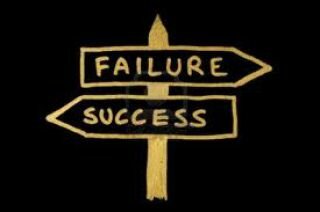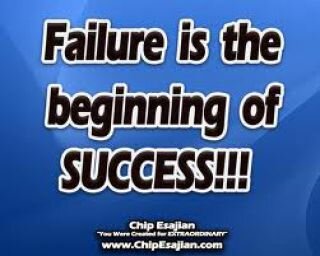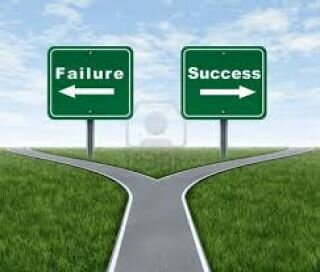When I was asked to find a subject for my thesis, I panicked almost immediately. I felt that my subject would need to relate to my work and connect to my artistic research. It also had to inspire new work, be original, innovative, and relevant. All in all, it had to be perfect.
During each and every one of my assessments and work presentations at the KABK, I’ve been told that I need to learn to let go. To dare to let go. Dare to fail. On the first day of each academic year, the head tutor Johan van Oord proclaims the necessity of failure for the student’s artistic development. In his opening speech, he refers to the academy as ‘the temple of failure,’ where one is expected to produce a multitude of ‘bad’ works rather than ‘good’ works, a place where failure is valuable. Failure is the only way in which the student can learn, improve his artistic practice and develop himself. But is this really the case?
I decided to dedicate my thesis to a study of failure within the artistic process and its influence on artistic development. I named it Fail to Learn.
But what does it mean to fail? I turned to the most practical tool first: the dictionary. The Oxford English Dictionary listed a number of definitions that I applied to a work of art as well as to the artistic process. In a nutshell, it seemed that what doesn’t succeed, fails, and what doesn’t fail, succeeds. The context in which the word is used is of utmost importance. An influential figure in the ‘art world’, a gallery owner, or art critic might refer to an artist as ‘failed’. But does this really mean that the artwork and the artist have failed? Or is it the artist who determines whether or not his work has failed? There’s one thing I’m sure of: we can’t control failure. Failure is dependent on coincidence and purposely failing is impossible. Maybe this is the source of my frustration when I’m summoned to take a risk, to dare to fail. Being a perfectionist, I tried to learn by doing my best to fail. In the end, I fail to learn.
I also looked at the psychological factors that influence failure within the artistic practice. For example, my greatest enemy: fear of failure. In Creativiteit onder druk, Maria Hopman writes that fear of failure is a fear that exists exclusively in our own experience. Her research uncovered that people who see themselves as fearing failure are equally tense as those who don’t consider their anxiety to be fear of failure. It seems that fear of failure is a phenomenon inherent only in the way that someone experiences or defines their fear. Still, fear of failure can have a stifling impact on the artistic practice. Hopman claims that taking responsibility and maintaining an active attitude are the only effective weapons against the blockade that fear of failure can produce. Additionally, Klaus Ottman describes the importance of assuming a certain attitude when dealing with failure. He calls it the ‘genius decision’, which boils down to the artist’s attempt at making the impossible possible. Art’s possible significance lies within this relationship between failure and striving for success.
Thinking back to Johan van Oord’s statement, I kept wondering how one could truly learn through failing. I realized I was looking for a practical use of failure within the artistic learning process. To study this further, I looked at the psychologist B.F. Skinner’s research into behavioural therapy. I attempted to apply his ideas on ‘operant conditioning’ on ‘art-making’ behaviour. According to Skinner, all behaviour (like art-making, for example) can be conditioned (taught) by giving the promise of a positive reward, which encourages and possibly even improves behaviour. But when behaviour is met with a negative response, like when your teachers disapprove of your work, this behaviour will be avoided in the future. In this sense, the ‘use’ of failure lies in its ability to teach someone to cease certain behaviour in order to avoid failure. Most important, according to Skinner, is that failure related to ensuing negative consequences, leads to a change in the artist’s behaviour and a modification of his artistic strategy. This can be seen as a positive influence that learning through failure can exert on the artistic development.
However much sense this principle might make, it’s obviously not that simple within the every day practice of art education. Here, the art student is expected to conduct fundamental research for his work on a ‘theoretical’ and ‘artistic’ basis. This sounds very broad, and it is. It’s difficult to discern whether a student has failed or succeeded to live up to these expectations. In any case, it’s essential for a student to learn how to deal with consequences such as negative feedback, because criticism from tutors and students is the most influential and important frame of reference available to the student. As long as the student remains open to the learning process inherent in criticism and feedback, the artistic crisis and failure can be overcome.
I spoke to Johan van Oord about the academy as ‘the temple of failure’ and asked him about the photo he used to illustrate this: Leap into the Void by Yves Klein. According to van Oord, this is a good example of a work resulting from failure. During the making of the photo, Klein had to fall in order to fly within the photo. Falling to fly. Failing to succeed. Failure and triumph are of equal importance within artistic development, said van Oord, upon which he concluded by saying that it would perhaps be better to refer to the academy as ‘the temple of failure and triumph’ instead.



